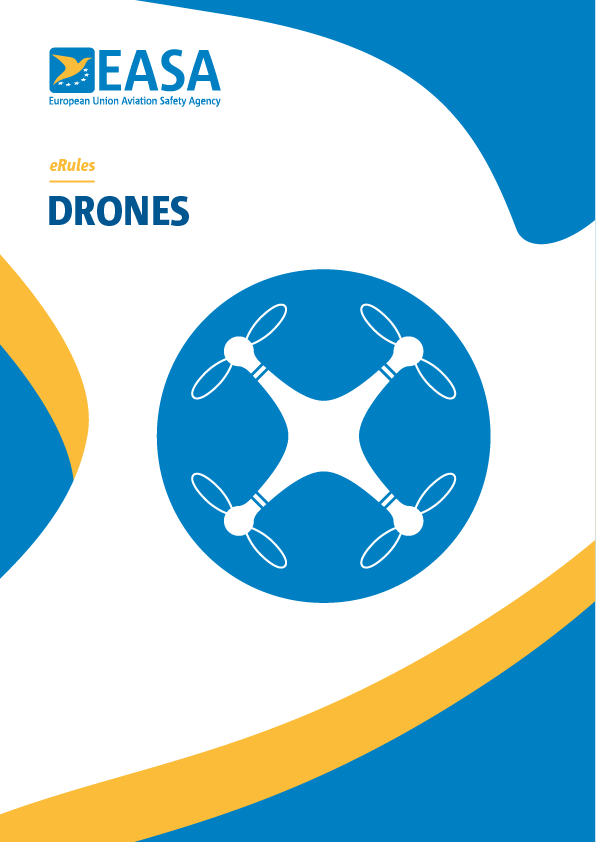Article 40 - Requirements for UAS operated in the ‘certified’ and ‘specific’ categories except when conducted under a declaration
Regulation (EU) 2024/1108
1. The design, production and maintenance of UAS that meets any of the following conditions shall be certified:
(a) it has a characteristic dimension of 3 m or more, and is designed to be operated over assemblies of people unless the UA is lighter than air;
(b) it is designed for transporting people;
(c) it is designed for the purpose of transporting dangerous goods and requiring a high level of robustness to mitigate the risks for third parties in case of accident;
(d) it is intended to be used in the ‘specific’ category of operations defined in Article 5 of Implementing Regulation (EU) 2019/947 and the competent authority has concluded, in accordance with Article 12(1) of Regulation (EU) 2019/947, on the basis of the risk assessment conducted by UAS operator in accordance with Article 11 of that Regulation, that the risk of the operation cannot be adequately mitigated without the certification of the UAS.
1a. Paragraph 1 does not apply to UAS that are specifically designed or modified for research, experimental or scientific purposes, and are likely to be produced in very limited numbers. The operation of such UAS will be subject to a permit to fly in accordance with Subpart B of Annex I of Regulation (EU) No 748/2012.
2. An UAS that meets the conditions specified in paragraph 1 shall comply with the applicable requirements laid down in Commission Regulation (EU) No 748/2012119 Commission Regulation (EU) No 748/2012 of 3 August 2012 laying down implementing rules for the airworthiness and environmental certification of aircraft and related products, parts and appliances, as well as for the certification of design and production organisations (OJ L 224, 21.8.2012, p. 1)., Commission Regulation (EU) 2015/640120 Commission Regulation (EU) 2015/640 of 23 April 2015 on additional airworthiness specifications for a given type of operations and amending Regulation (EU) No 965/2012 (OJ L 106, 24.4.2015, p. 18). and Commission Delegated Regulation (EU) 2024/1107121 Commission Delegated Regulation (EU) 2024/1107 of 13 March 2024 supplementing Regulation (EU) No 2018/1139 of the European Parliament and of the Council by laying down detailed rules for the continuing airworthiness of certified unmanned aircraft systems and their components, and on the approval of organisations and personnel involved in these tasks (OJ L, 2024/1107, 17.5.2024, ELI: http://data.europa.eu/eli/reg_del/2024/1107/oj)..
2a. UAS certified for reasons other than those specified in paragraph 1 shall comply with the applicable requirements laid down in Regulation (EU) No 748/2012 and in Regulation (EU) 2015/640.
3. Unless it needs to be certified in accordance with paragraph 1, a UAS used in the ‘specific’ category shall feature the technical capabilities set out in the operational authorisation issued by the competent authority or as defined by the Light UAS Operator Certificate (LUC) pursuant to Part C of the Annex to Implementing Regulation (EU) 2019/947.
4. Unless privately built, all UAS not subject to registration according to Article 14 of the Implementing Regulation (EU) 2019/947 shall have a unique serial number compliant with standard ANSI/CTA-2063-A-2019, Small Unmanned Aerial Systems Serial Numbers, 2019.
5. Each UA intended to be operated in the ‘specific’ category and at a height below 120 meters shall be equipped with a remote identification system that allows:
(a) the upload of the UAS operator registration number required in accordance with Article 14 of Implementing Regulation (EU) 2019/947 and any additional number provided by the registration system. The system shall perform a consistency check verifying the integrity of the full string provided to the UAS operator at the time of registration. In case of inconsistency, the UAS shall emit an error message to the UAS operator;
(b) the periodic transmission of at least the following data, in real time during the whole duration of the flight, in a way that it can be received by existing mobile devices:
(i) the UAS operator registration number and the verification code provided by the Member State during the registration process unless the consistency check defined in point(a) is not passed;
(ii) the unique serial number of the UA compliant with paragraph 4 or, if the UA is privately built, the unique serial number of the add on, as specified in Part 6 of the Annex;
(iii) the time stamp, the geographical position of the UA and its height above the surface or take-off point;
(iv) the route course measured clockwise from true north and ground speed of the UA;
(v) the geographical position of the remote pilot;
(vi) an indication of the emergency status of the UAS.
(c) to reduce the ability of tampering the functionality of the direct remote identification system.
